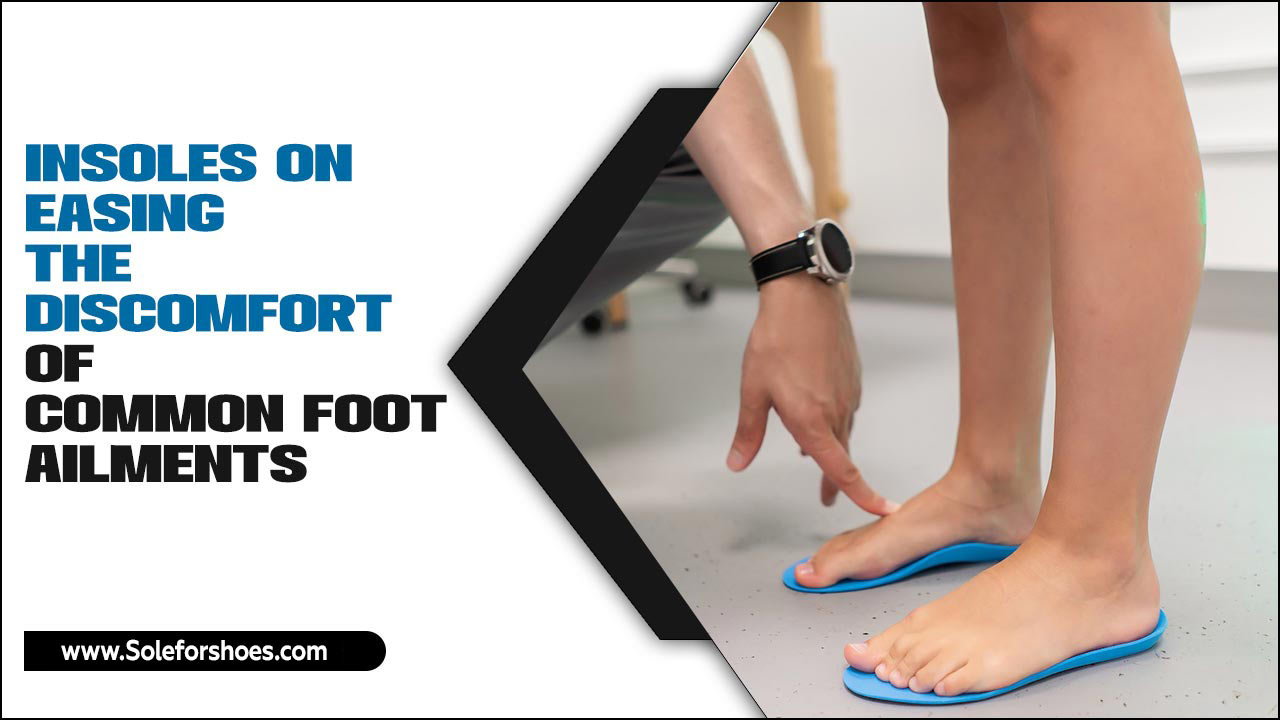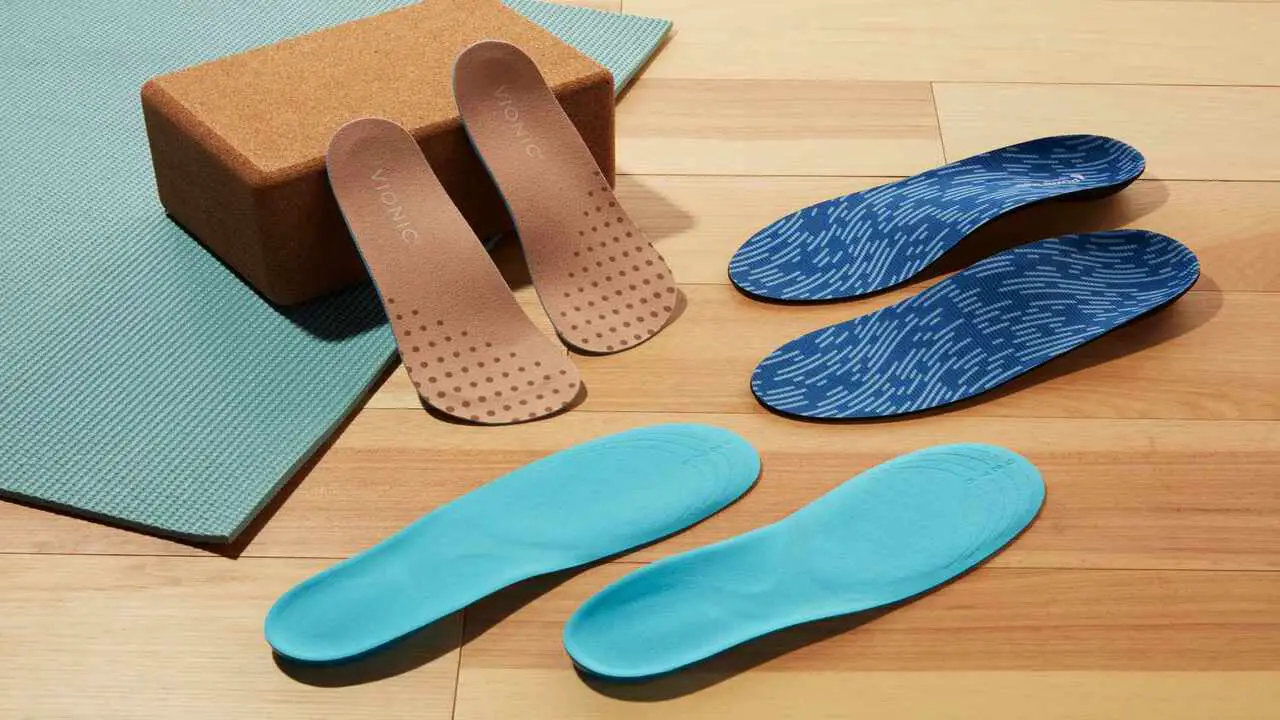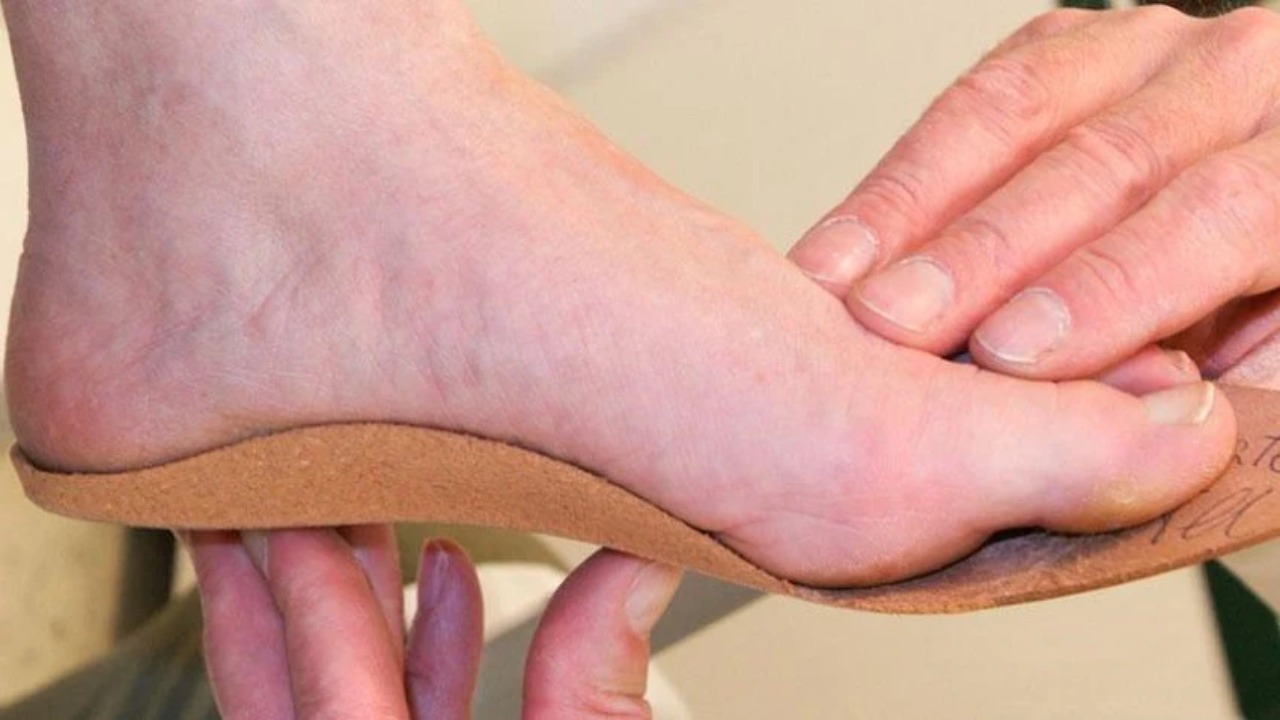Are you tired of feeling uncomfortable in your shoes? Foot pain can be a daunting experience, and it can often lead to discomfort that affects your daily routine.
However, there’s no need to worry anymore! With insoles, you can say goodbye to the discomfort caused by common foot ailments like plantar fasciitis, hammer toes or Morton’s Neuroma. Insoles are designed to provide support and cushioning to your feet for better alignment and balance.
Here, we will explore how insoles on easing the discomfort of common foot ailments. From tips on proper use and care to choosing the right type of insole for your feet, we’ve got you covered. We will also discuss how insoles can benefit people with diabetes and who should be consulted for persistent foot pain. So, put your best foot forward with our guide on insoles!

How Insoles On Easing The Discomfort Of Common Foot Ailments – The Science Behind Insoles

Insoles on easing the discomfort of common foot ailments. Whether you suffer from plantar fasciitis, flat feet, or bunions, insoles can provide much-needed support and cushioning to help alleviate pain and discomfort. They work by redistributing pressure on your feet, providing extra arch support, and absorbing shock with each step.
Additionally, some insoles have specific designs to address specific foot conditions, such as heel spurs or metatarsalgia. By wearing insoles, you can give your feet the added support they need and go about your day with less pain and discomfort.
How Insoles Can Help Relieve Foot Pain

Insoles can be a helpful solution for relieving foot pain caused by common foot ailments. Whether you suffer from plantar fasciitis, flat feet, or high arches, insoles can provide additional support and cushioning to help alleviate discomfort.
By redistributing pressure and providing proper alignment, insoles can reduce foot strain and promote better posture. They can also provide shock absorption, which is especially beneficial for those who engage in activities that involve repetitive impact on the feet, such as running or jumping.
Insoles come in various materials and designs to suit different needs, so it’s important to choose the right type for your specific foot ailment. Consulting with a podiatrist or orthopaedic specialist can help you determine the best insoles for your needs and ensure proper fit and effectiveness.
Benefits Of Insoles For Foot Pain Relief

Insoles can be a game-changer for easing the discomfort of common foot ailments. Whether you suffer from plantar fasciitis, flat feet, or general foot pain, insoles offer several benefits for foot pain relief. Incorporating insoles into your footwear routine can provide much-needed relief from common foot ailments and help you maintain an active lifestyle.
- Improved Shock Absorption: The cushioning provided by insoles helps to absorb the impact of each step, reducing the strain on your feet and joints.
- Arch Support: Insoles with arch support can help alleviate pain associated with flat feet or fallen arches by providing the necessary support and stability.
- Proper Alignment: Insoles can help correct any misalignment in your feet, promoting proper posture and reducing strain on other parts of your body, such as your knees and lower back.
- Pressure Distribution: Insoles can distribute pressure more evenly across your feet, relieving hotspots and preventing further discomfort.
- Enhanced Comfort: By adding an extra layer of cushioning and support, insoles can significantly improve overall comfort, allowing you to stay on your feet for longer periods without pain.
Tips For Proper Insole Use & Care
Proper use and care of insoles can help alleviate the discomfort associated with common foot ailments. Here are some tips to ensure you get the most out of your insoles. By following these tips, you can ensure that your insoles provide optimal support and comfort for your feet, helping to alleviate common foot ailments.
- Please Choose The Right Size: It’s important to select insoles that fit your shoe size properly. Ill-fitting insoles can cause discomfort and may not provide the intended support.
- Insert Them Correctly: Place the insoles into your shoes with the fabric side facing up. Make sure they are positioned flat and centred before putting on your shoes.
- Replace As Needed: Over time, insoles can wear down and lose their effectiveness. It’s recommended to replace them every 6-12 months or sooner if you notice signs of wear and tear.
- Clean Regularly: Keep your insoles clean by removing them from your shoes and washing them with mild soap and water. Allow them to dry completely before reinserting them into your shoes.
- Rotate Pairs: If you have multiple pairs of shoes, consider using different sets of insoles in each pair. This allows the insoles to air out and reduces the risk of odour buildup.
The Pain Of Hammer Toes And Morton’s Neuroma
Hammer toes occur when the middle joint of the toe becomes bent and stuck in a downward position, causing discomfort and pain. Morton’s neuroma is a condition where a nerve in the foot becomes compressed, causing numbness, tingling, and pain. Insoles can provide cushioning and support to alleviate the discomfort of these foot ailments.
Look for insoles with metatarsal pads or arch support to redistribute pressure and relieve pain. It’s important to choose properly fitting insoles specifically designed for the type of foot ailment you are experiencing.
Who Should Be Consulted For Persistent Foot Pain?
Persistent foot pain should not be ignored, and it is crucial to seek the advice of a podiatrist or medical professional. A podiatrist can diagnose the underlying cause of the pain and prescribe appropriate treatment. Neglecting foot pain can result in severe conditions in the future.
Regular check-ups with a podiatrist can help prevent such chronic foot problems. Moreover, some common causes of foot pain include plantar fasciitis, Achilles tendonitis, neuroma, and stress fractures.
In some cases, wearing appropriate footwear or using custom orthotics may also alleviate foot pain. Therefore, seeking professional medical advice at the earliest signs of foot discomfort is essential to ensure prompt diagnosis and treatment.
How To Choose The Right Type Of Insole For You

Choosing the right type of insole for your specific foot ailment can greatly help in easing discomfort and promoting proper foot alignment. Here are some factors to consider when selecting the right insole for you.
By carefully considering these factors and consulting with a healthcare professional if needed, you can find the right type of insole that will effectively alleviate discomfort and promote healthier feet.
- Foot Condition: Identify the specific foot ailment you are dealing with, such as plantar fasciitis, flat feet, or high arches. Different insoles have specific designs to address different conditions, so it is important to choose one that targets your specific needs.
- Arch Support: Determine whether you have low arches, high arches, or neutral arches. Insoles with proper arch support can provide stability and reduce strain on your feet.
- Cushioning: Consider the level of cushioning you require. If you have sensitive or painful areas on your feet, look for insoles with extra padding or gel inserts to provide added comfort.
- Size And Fit: Ensure that the insoles you choose are the correct size and can be easily trimmed to fit your shoes. Ill-fitting insoles can cause discomfort and may not provide the necessary support.
- Material: Insoles come in a variety of materials, including foam, gel, and leather. Consider which material would be most comfortable for your feet and suit your lifestyle (e.g., moisture-wicking properties for athletes).
Insoles For Different Types Of Feet

Regarding easing the discomfort of common foot ailments, insoles can be a game-changer. They provide additional support and cushioning, helping to alleviate pain and improve overall foot comfort. Different types of feet require different types of insoles. Here are a few examples:
- Arch Support Insoles: These are designed for individuals with high arches, providing extra support to help distribute weight evenly and reduce strain on the arches.
- Flat Feet Insoles: For those with flat feet, insoles with built-in arch support can help to provide the necessary structure and stability that is lacking in the natural arch of the foot.
- Heel Cup Insoles: If you suffer from heel pain or plantar fasciitis, insoles with a deep heel cup can help to cushion and stabilize the heel, reducing pain and promoting proper alignment.
- Metatarsal Pads: These insoles have additional padding under the ball of the foot, helping to relieve pressure and discomfort caused by conditions such as metatarsalgia or Morton’s neuroma.
Finding the right type of insole for your specific foot condition is essential for optimal comfort and support. It is always recommended to consult with a healthcare professional or podiatrist for personalized advice.
Putting Insoles In Your Shoes

Alleviating foot discomfort can be as simple as slipping insoles into your shoes. Insoles are an effective solution for common foot problems like plantar fasciitis, flat feet, and bunions. Seek out insoles offering features such as arch support, cushioning, and shock absorption to provide pain relief.
Consider the material, whether it’s foam or gel, that suits your needs. Custom orthotics are an excellent choice for specific foot conditions or unique foot shapes. Insoles not only offer extra structure and pressure relief but also enhance posture and reduce the risk of injury from everyday activities.
Insoles For People With Diabetes
Diabetes can lead to foot problems due to reduced circulation and nerve damage, resulting in discomfort and potential complications like ulcers or blisters. To alleviate these issues, specialized insoles designed for people with diabetes can provide support and cushioning.
These insoles often feature extra padding, moisture management, and antimicrobial properties for added protection. Properly fitting shoes are essential, along with regular foot examinations, to effectively manage diabetes-related foot concerns. By incorporating these insoles into everyday activities, individuals with diabetes can find relief from foot discomfort and minimize the risk of further complications.
Conclusion
Insoles on easing the discomfort of common foot ailments. They provide support, cushioning, and alignment to help alleviate pain and prevent further damage. Whether you’re dealing with foot pain, hammer toes, Morton’s neuroma, or the unexpected foot pain that comes with high heels and pregnancy, insoles can make a world of difference.
It’s important to consult a healthcare professional if you’re experiencing persistent foot pain, as they can guide you on the best course of action. When choosing insoles, consider your specific foot type and needs. And remember, proper care and usage of insoles is essential for their effectiveness and longevity. So go ahead, invest in the right insoles and give your feet the comfort they deserve.
Frequently Asked Questions
1.What Insoles Do Podiatrists Recommend?
Ans: Podiatrists often recommend custom-made orthotics tailored to specific foot needs. Trusted insole brands include Superfeet, Powerstep, and Spenco. Look for arch support and cushioning to alleviate foot pain from conditions like plantar fasciitis or flat feet. Please consult a podiatrist before purchasing insoles to ensure they’re suitable for your foot condition.
2.Does Medicare Pay For Orthotics?
Ans: Medicare coverage for orthotics depends on medical necessity and the type of plan you have. A doctor’s prescription is usually required. To determine coverage and eligibility, it’s important to check with your provider or Medicare directly.
3.Will Insoles Help Foot Pain?
Ans: Insoles are an effective solution for alleviating foot pain caused by common foot ailments. They provide arch support, cushioning, and shock absorption. In addition, they improve foot alignment and reduce pressure on specific areas of the foot.
4.Do Orthopaedic Insoles Really Work?
Ans: Orthopaedic insoles can effectively treat and prevent foot ailments by providing support, cushioning, and pressure distribution. However, their effectiveness depends on individual conditions and usage. Please consult a healthcare professional before using orthopaedic insoles to ensure they are suitable for your specific needs.
5.What Are The Benefits Of Shoe Insoles?
Ans: Shoe insoles offer extra cushioning and support, alleviating foot pain from conditions like flat arches and plantar fasciitis. They improve foot posture and reduce the risk of injury. Choosing the right insole for your needs can greatly enhance overall foot comfort.
